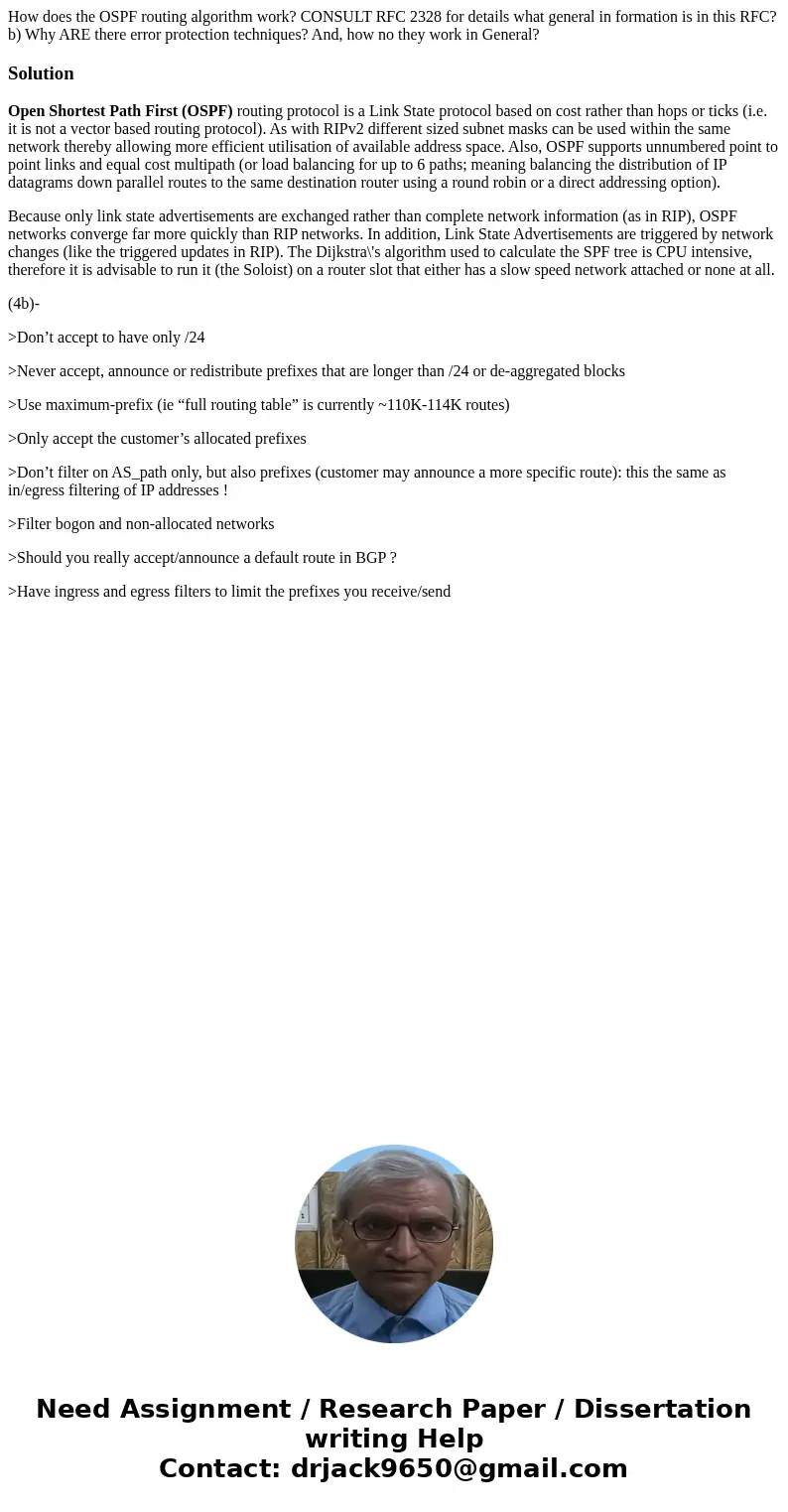How does the OSPF routing algorithm work CONSULT RFC 2328 fo
Solution
Open Shortest Path First (OSPF) routing protocol is a Link State protocol based on cost rather than hops or ticks (i.e. it is not a vector based routing protocol). As with RIPv2 different sized subnet masks can be used within the same network thereby allowing more efficient utilisation of available address space. Also, OSPF supports unnumbered point to point links and equal cost multipath (or load balancing for up to 6 paths; meaning balancing the distribution of IP datagrams down parallel routes to the same destination router using a round robin or a direct addressing option).
Because only link state advertisements are exchanged rather than complete network information (as in RIP), OSPF networks converge far more quickly than RIP networks. In addition, Link State Advertisements are triggered by network changes (like the triggered updates in RIP). The Dijkstra\'s algorithm used to calculate the SPF tree is CPU intensive, therefore it is advisable to run it (the Soloist) on a router slot that either has a slow speed network attached or none at all.
(4b)-
>Don’t accept to have only /24
>Never accept, announce or redistribute prefixes that are longer than /24 or de-aggregated blocks
>Use maximum-prefix (ie “full routing table” is currently ~110K-114K routes)
>Only accept the customer’s allocated prefixes
>Don’t filter on AS_path only, but also prefixes (customer may announce a more specific route): this the same as in/egress filtering of IP addresses !
>Filter bogon and non-allocated networks
>Should you really accept/announce a default route in BGP ?
>Have ingress and egress filters to limit the prefixes you receive/send

 Homework Sourse
Homework Sourse